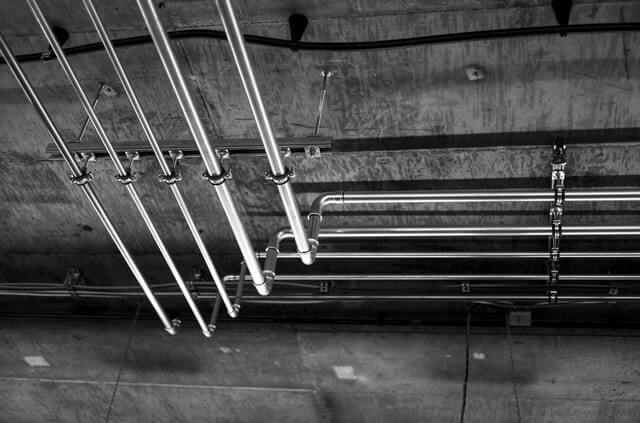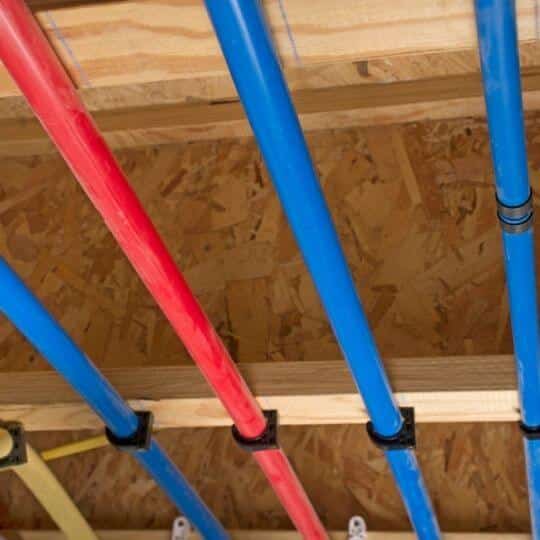Water and gravity can work for us or against us. One of the situations where water flows where we need it less is when having a flooded basement. The most common scenario is the sump pump not working basement flooded.
If the rain keeps pouring and your pump does not start, you need a solution fast. Otherwise, you will be dealing with water damage to your basement and mildew growth.
This post presents the most common sump pump problems and their solutions. Sump pump flooding the basement is an unpleasant prospect, but you need to prepare for it. Any homeowner should know what to do when the sump pump stops working.
Sump pump not working basement flooded

Even if you maintain your sump pump carefully, you can still deal with unpleasant surprises. For example, if the pump stops working during heavy rains, your basement or crawlspace could get flooded.
Under these circumstances, you have two primary options:
- Troubleshooting the sump pump
- Using a portable water pump
We suggest the second option if you cannot start your sump pump in a short time. Leave the repairs for later and focus on minimizing water damage to your home.
What can cause a sump pump to malfunction?
Have you noticed how devices seem to malfunction precisely when you need them the most?
It could be a coincidence, or the device breaks due to intense use.
Either way, the first step towards solving the problem is understanding its cause. Here are the leading causes of sump pump malfunctions:
- Power failure
A typical scenario is the sump pump not working after a power outage.
There are two possibilities here:
The power is still off, and the pump does not connect to an electricity source. In this case, consider a generator that you can activate manually. A generator is a good idea and a lifesaver in multiple situations. This piece of equipment will provide you with electricity whenever the power is off for any reason.
Or, the electricity is back, but the power surge has damaged the sump pump. Install a surge protection device to protect your entire electrical system to prevent this.
- The sump pump is too small
An incorrectly sized sump pump will not be effective. If the pump is too small and you force it to work hard, you can damage it. Moreover, a small pump will not suck water out adequately.[1]
- Installation issues
Not following installation instructions can result in a sump pump malfunction. For instance, manufacturers recommend a check valve to be installed on the discharge line. Without it, the pump impeller could start to rotate backward.
- Shifting position
Sometimes a sump pump can shift its position inside the sump pit due to vibration. As a result, the float becomes ineffective, and the on/off switch does not work anymore.
- Improper maintenance
Different manufacturers have different recommendations for maintaining their products. However, standard advice includes: running the pump annually, checking if water discharges, checking for unusual noises, etc.
- Clogged discharge line
The sump pump will stop working if water cannot exit through the discharge line. Eliminate debris from the exit point and ensure the pipe is not at risk for freezing.
- Product defect
Sometimes, a product can be defective from the beginning. Test the pump when installing it to ensure it is working correctly.
Sump pump troubleshooting tips
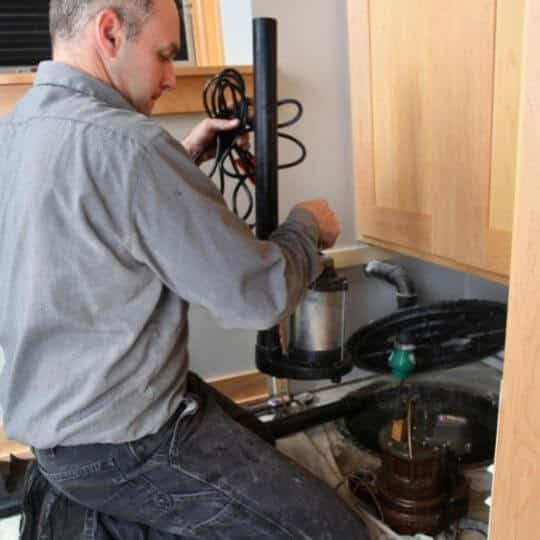
Your sump pump is not working, and the water level keeps growing at an alarming rate? Here are some fast sump pump troubleshooting ideas:
- Check for power
Does the unit have access to power? Is it plugged in? Do you have electricity, or are you dealing with a power outage? You can plug another device into the sump pump’s outlet receptacle to ensure it gives off voltage.
- Check the float switch.
Does the pump turn on when you manually lift the float? Look into the sump pit and check for objects jamming the switch.
- Check the impeller
Sump pump clogged with mud is a widespread problem. If the pump sucks in dirt, the impeller can be stuck. Remove debris that could prevent the impeller from rotating.
Another possibility is having broken off impeller blades, which prevents them from pumping water. Replacement is necessary.
- Inspect the check valve
Sometimes a sump pump will run but without removing water. So the first action is to see if the arrow on the component is pointing in the right direction.
- Inspect the discharge line
Check the pipe and its joints for leaks and repair them if necessary. If the discharge line prevents water from exiting, the water will return to the basin.
- Check intake screen
Debris could have blocked the intake screen located on the bottom of the unit. Clean the screen to ensure the functionality of the sump pump.
How to reset a sump pump
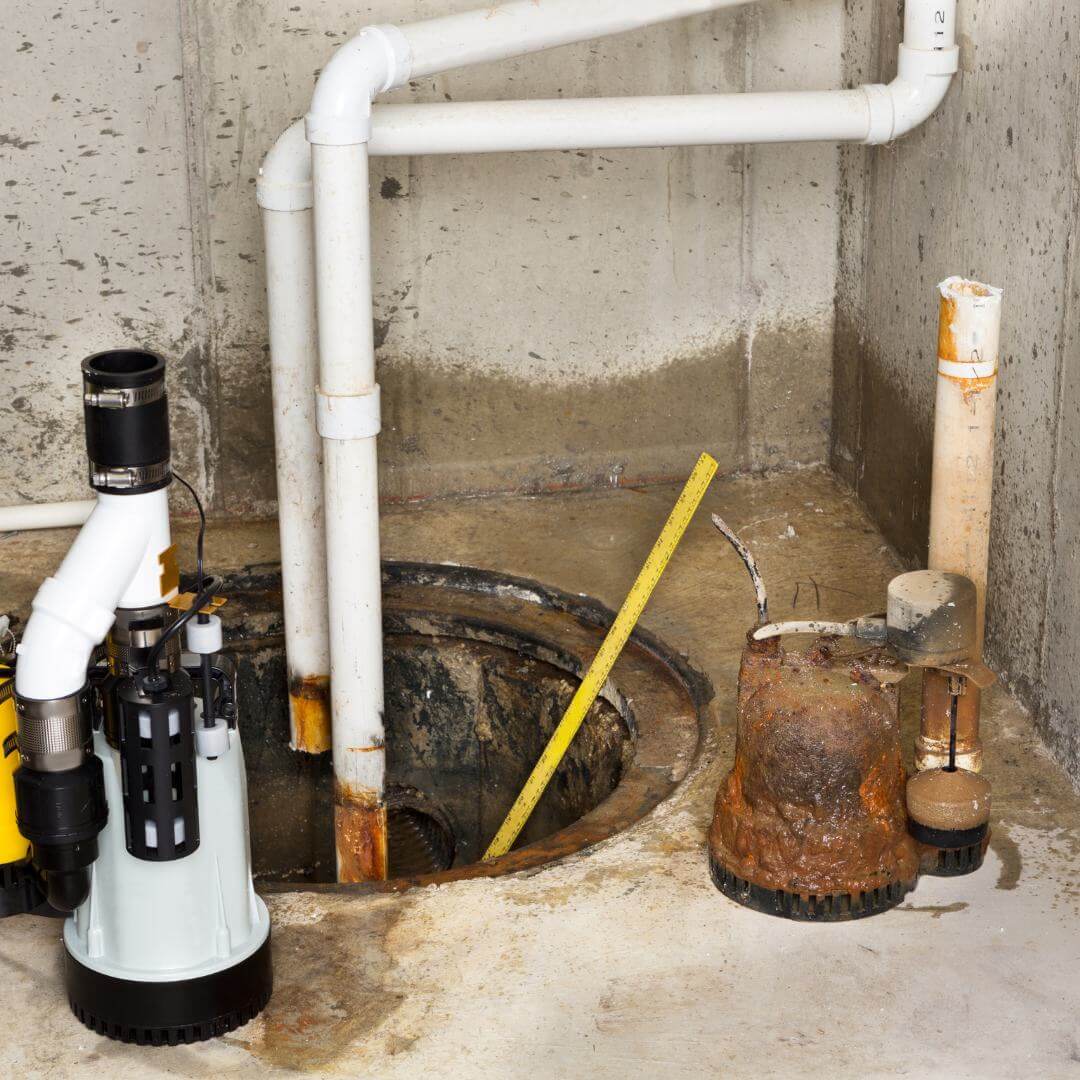
A good old reset can do the trick for a variety of appliances. Sometimes you may not even know what was wrong, but who cares as long as you can do your job?
Keep on reading to find out how to reset a sump pump:
- Disconnect power
Working with electrical gear requires precautions. Disconnecting power will ensure your safety during the resetting of any system.
- Remove the pump from the sump pit
Remove the basin cover and disconnect drainage pipes. Place the pump on an old towel to prevent dirt from pouring on the floor.
- Clean the sump pump from dirt and debris
Clean all the dirt collected in the bottom of the sump pit. Also, clean the pump’s filter. You want to avoid small rocks jamming your pump.
- Check the drain line
Make sure the drain line is free of clogs, too. A clogged discharge line can cause your sump pump to make a lot of noise.
- Reconnect the sump pump
Put everything back the way you found it. The instructions manual can help you if you can’t remember installation steps.
- Press the reset button
Some pumps have a reset button, so press it to try and reset the motor.
The tips above are not working? Then your pump could have a more severe problem, and you need to take action to avoid a flooded basement. [2]
Sump pump maintenance tips
The reset process we described earlier includes some maintenance steps, but not all of them.
Do you want to keep your sump pump in good working order? You will need to complete the following actions regularly:
- Examining the sump pump for rust and corrosion;
- Cleaning the sump pump from debris and dirt;
- Checking the instructions manual to see if the pump needs lubrication;
- Testing the sump pump if it has not been working for a long time;
- Checking for residual water inside the discharge line (it could freeze during winter);
- Inspecting the check valve which prevents water from flowing back into the sump pit;
- Ensuring a backup power source;
- Making sure the discharge location is proper (20 feet from the house and allowing water to drain well);
- Carrying out annual service on the pump by calling a professional. [3]
What to do if your basement is flooded and the sump pump is not working
Sump pump not working, basement flooding?
In many cases, homeowners cannot fix the sump pump in a short time. For this reason, you need to come up with a backup plan. Otherwise, you will be spending your day carrying buckets of water outside your home.
One solution is keeping a backup sump pump. Many homes have two sump pumps or even three. If one of the pumps fails, you can use the other one. Or you can use both of them for faster results in case of a flood.
The other solution is using a portable water pump.
This device is simply a pump that moves water from one place to another. Portable water pumps come in different types and sizes and come in handy for multiple jobs. They often have a high flow rate and are excellent for various thin fluids.
Keep a portable water pump in your basement. We guarantee you will find a variety of other uses for it!
Read Next: Sump Pump vs Ejector Pump
Bottom line
Sump pump not working, the basement flooded?
There are many things you can try, but try to act fast.
One course of action would be troubleshooting the sump pump. Sometimes, a fast reset and cleaning some debris from the pump can do the trick.
If troubleshooting doesn’t work, your sump pump could need repair. Find a different solution if you think the repair will take a long time. Employing a portable water pump will solve the problem in most cases.
After the crisis is over, remember to devise a backup plan, so your basement does not flood again. You may need to pay more attention to sump pump maintenance or hold a second one just in case. It’s always good to have multiples sump pumps in your home.
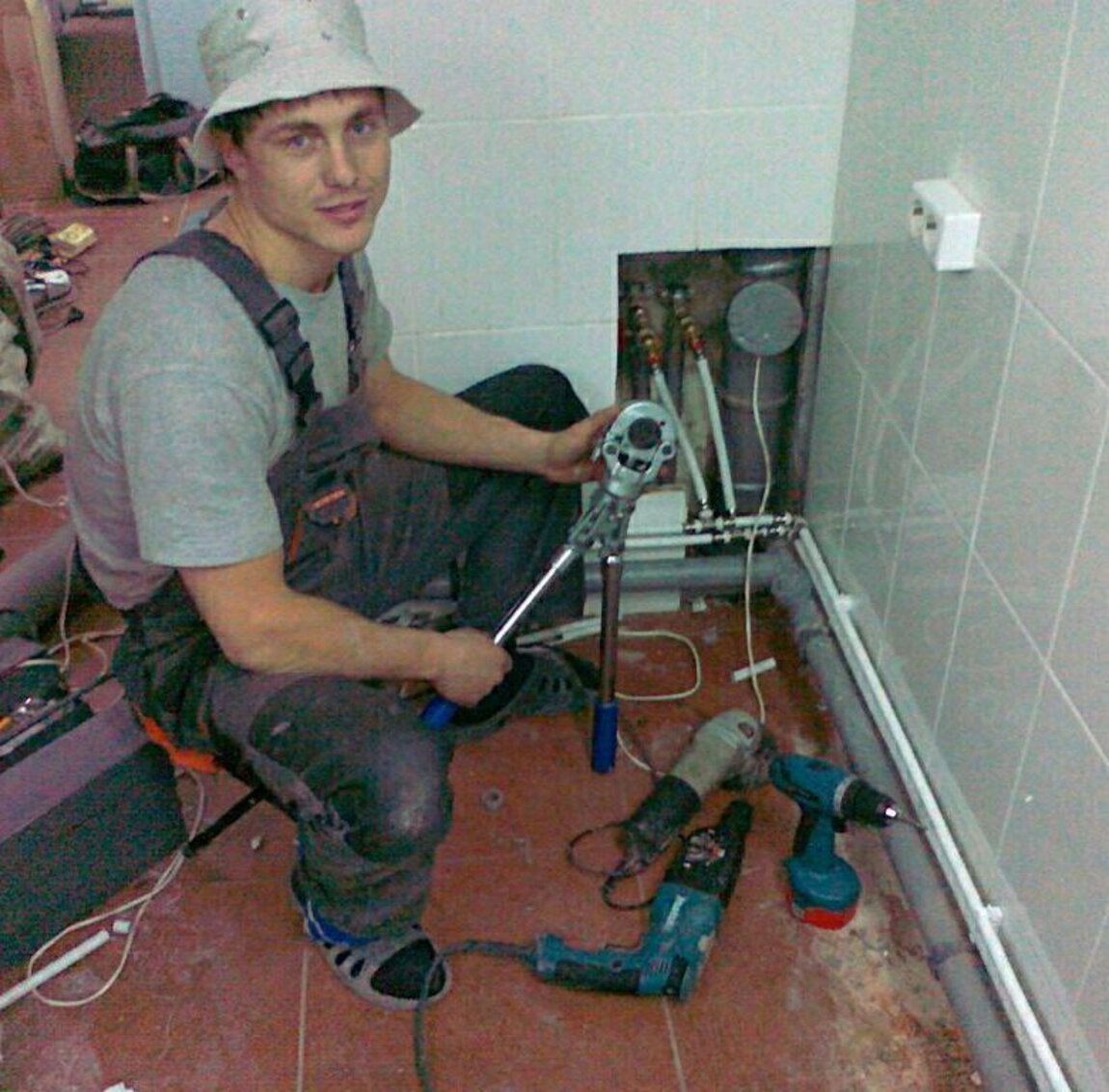
Michael Davis is a heating & plumbing expert who currently works as independent contractor in SC. He also writes for Plumbertip.
For almost 10 years he worked on various plumbing tasks across South Carolina.

